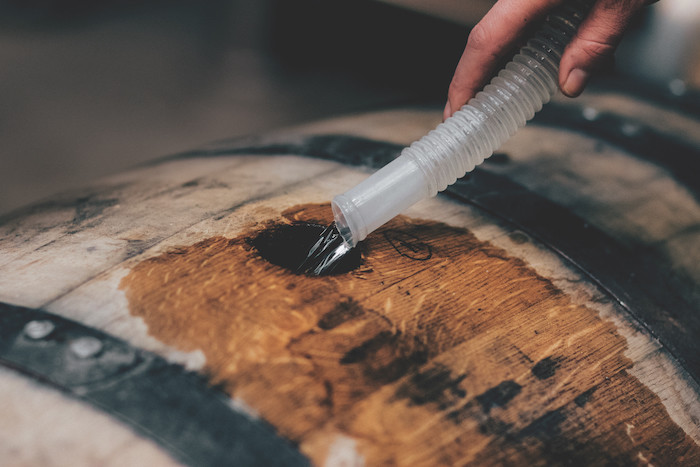
From peat and experimental proofing, to reinvigorating rye and the continued love affair with single malt, bartenders should be sniffing out the innovations in American whiskey, says Millie Milliken.
Correct me if I’m wrong, but I don’t think any of us had Beyoncé on our whisk(e)y bingo cards this year. When news broke in August that she was launching Sir Davis, an American whisky (without the ‘e’) in collaboration with Moët Hennessy, she singlehandedly caused one of the biggest stirs in the whisky category in recent years.
How UK bartenders are embracing American whiskey right now is in an interesting state of flux it seems. Despite healthy figures coming from DISCUS on American whiskey’s export power, anecdotally it feels like American whiskey isn’t as hot in the UK as it once was. Findings from Class magazine’s inaugural Class Report revealed American whiskey was only the fifth most-used spirit. In the same report, while the Old Fashioned came in at number two for bestselling classics (possibly thanks to the rise of the New Fashioned), the Whiskey Sour and Manhattan crawled in at 23rd and 28th respectively – a far cry from the glory days of 10 years ago.
Innovation in the American whiskey category could not, it seems, be more welcome. Luckily, brands are delivering with the likes of new subcategories, a return to pre-Prohibition styles and cask experimentation – all of which should be exciting bartenders here in the UK.
Reinvigorating rye
Ryes emerging from the US distilleries have been coming thick and fast in recent years and a leaning of palates further towards the rye flavour spectrum (also perhaps driven by more rye expressions being released by scotch and English whisky) is paying dividends.
That Beyoncé’s Sir Davis has decided to use 51% rye and 49% malted barley as its mash bill is not only a nod to scotch flavour and texture profiles, but also to the heritage of rye in American whiskey making and its pre-Prohibition, American distilling prowess – a nouveau Monongahela rye of sorts with its eschewing of corn. “I really love this mash bill,” says Sir Davis brand ambassador Cameron George, “because it's kind of a hand-in-glove melding of classic American rye whiskey with a global outlook to it as well, with a lot of distilling regions and countries having reverence for malted barley.”
American single malt
Anecdotally, asking the question of what the most exciting thing in US whiskey innovation is right now, an overwhelming number of responses will come back as ‘American single malt’. While this category is far from new, the continued drive from distillers and the 2016-formed American Single Malt Whiskey Commission to define this ever-expanding category is keeping it on the lips of many a bartender and buyer here in the UK, no doubt spurred by the natural association with (but by no means replication of ) scotch single malt.
Brands like St George Spirits, Balcones, Westland and Westward have been leading the charge for a while, but as recently as 2022, American whiskey behemoth Jack Daniel’s launched its first ever single malt to the world.
“As soon as we start removing traditional provenances with the idea of ‘single malt’ then the world suddenly opens up to unexpected flavours and producers who are redefining what single malt can mean. And the American single malt distillers are at the forefront of this,” says Georgie Bell, co-founder of independent bottler The Heart Cut, whose seventh release was a single malt from Westward. She describes how it makes its whiskey as brewing like a craft beer, distilling like a single malt and ageing like a bourbon, resulting in “something you’d never expect from a ‘traditional’ single malt… but one that, for me, is far more conversational and exciting”.
Peat, proofing and finishing too
Proofing down is something that FEW Spirits has been playing around with too, using the likes of cold brew coffee and oolong tea to bring its bourbon and rye respectively down to bottling strength in a quest to shake up whiskies the brand knows bartenders already love.
“The idea was that we have a delicious, interesting base that is being well perceived, so how can we then change this experience of this whiskey?” asks Samson & Surrey brand ambassador Kyra Elton.
FEW is also an example of big names like Heaven Hill having more craft brands (alongside Widow Jane) outside of Kentucky to offer: “Craft,” says Elton, “is definitely more appreciated among bartenders in the UK.”
Over at Michter’s meanwhile, executive vice president Matt Magliocco lets me in on the fact that Michter’s Legacy Series brands Shenk’s and Bomberger’s are where its research and development lies right now, with new expressions in the works.
Using peated malted barley or finishing in ex-peated whiskey casks also seems to be exciting whiskey makers, especially in bourbon. Buffalo Trace’s Experimental Collection Peated Bourbon in 2023 used peated malt in its mash bill to much acclaim. In fact, finishing in the bourbon category is becoming more and more experimental, most notably in rum casks such as Wild Turkey’s Master’s Keep Voyage aged in Appleton rum barrels, and Old Forester’s 117 Series.
Next year’s mooted tariff reversal might be in our sights, but there is a world of seemingly untapped whiskey potential waiting for bartenders to take advantage of right now – you might just have to look beyond your category preconceptions to find it.


